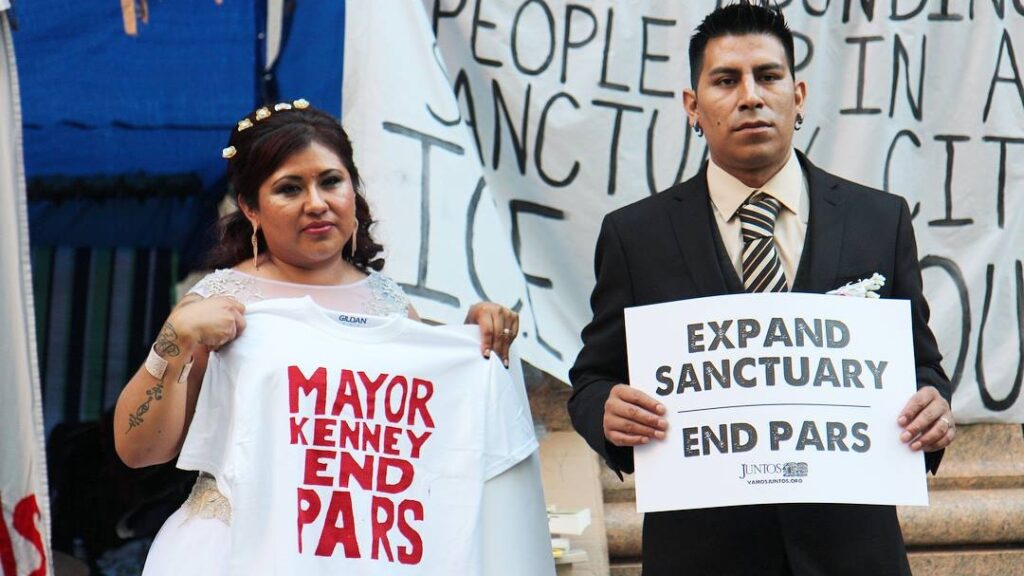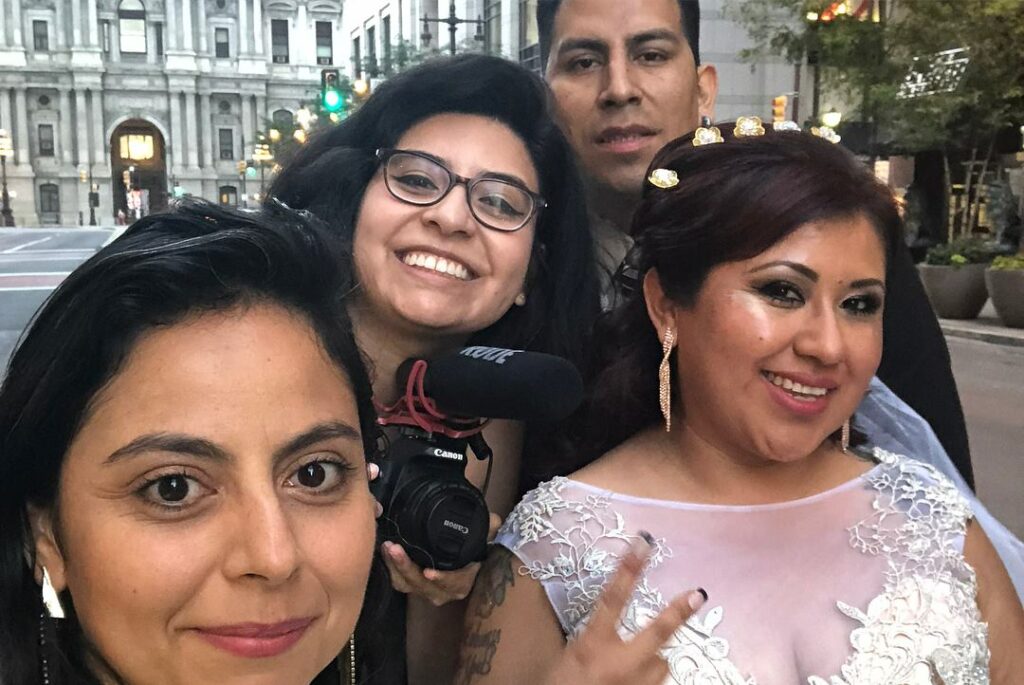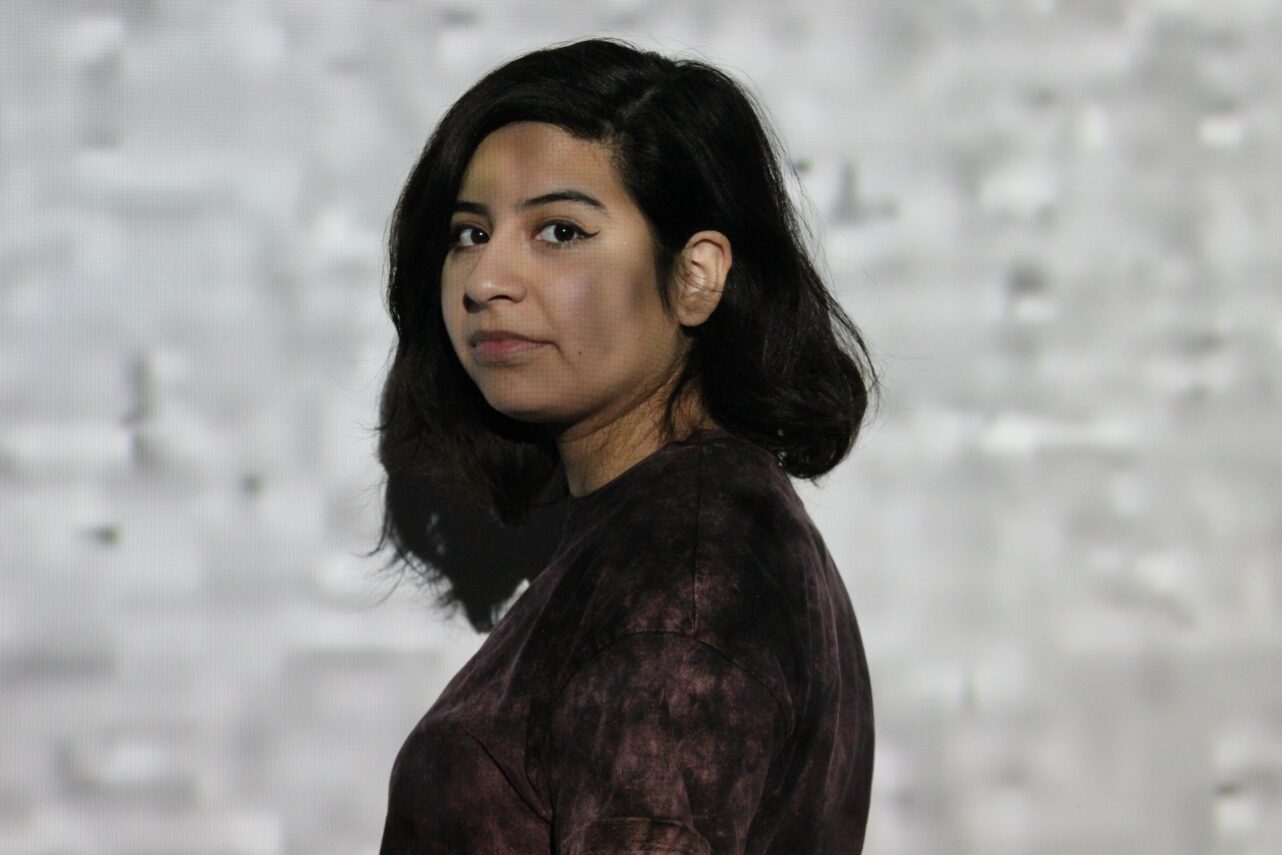Kristal Sotomayor is a proud daughter of Latinx immigrants, and as a first generation American she felt compelled to make the documentary, ‘Expanding Sanctuary.’ Filmed in Philadelphia, the doc examines the current political strife facing Latinx immigrants and those of other backgrounds, and functions as a call to action for human rights awareness.
“I say that because I am the daughter of Latinx immigrants, I am a documentary filmmaker. I gravitate towards the way of documentary filming the reality of the truth of the Latinx experience.”
Sotomayor emphasizes her identity when discussing her work as a filmmaker because for her, those two things are inextricably linked. We discussed her new film, her influences and goals as a Latina filmmaker.
How has being the daughter of Latinx immigrants shaped your perspective in storytelling?
There are so many stereotypes of the victimization and villainization of our communities. Growing up seeing all of these really terrible images of Latinidad made me gravitate toward sharing a different perspective.
As a filmmaker, who are some of your biggest influences?
There are so many. When it comes to documentaries I’m inspired by, the Snowden CNN documentary was special. I loved the way [the director] used documentary as a way of recording something that’s so important to US history, and being such a rebel because throughout the film he was being tracked by the US government.
In making my film I also filmed a lot of protests and used a lot of live footage. ‘Whose Streets?’ was such an important film and also did that. It came out after the police killing Michael Brown and informed my filmmaking and what I gravitate towards.
Narrative films like ‘Daughters of the Dust’ directed by Julie Dash changed my life. I had never seen a community portrayed in that way. I understand now why people call it a foreign film filmed in the US.
How has having the involvement of the community members you are discussing helped decolonize documentary-making?
I think when you think of documentaries, you have to think of the history and often it’s the news as tragedy porn or content that further stereotypes communities of color. Whether it’s documentaries or fiction, they stereotype throughout. Being a woman of color and daughter of Latinx immigrants and a first generation American, it’s important to think of how we use tools like cameras. They were not created to film people of color, so how can we use these tools to change the oppression we’ve felt for so many years.
For me, when it comes to documentaries, you have to communicate and be open to the community you’re working with. Just because I’m Latina doesn’t mean I grew up there [in the communities I film]. If it wasn’t for Juntos this film wouldn’t be made. Making sure [community members] are informed every step of the way and that no one will see this film before they do matters. I hand out my business card when I give people their release. I think working with Juntos and establishing levels of trust has been huge, but that’s also one of the most important parts of this film. I want this film to be as accurate as possible. It’s really important to work with the community in telling the story because I want that accuracy. We want to stop the colonial aspect of people not knowing that they’re in films that they’re in.

From the film’s logline: Juntos, a Latinx immigrant rights organization, has learned that Immigration and Customs Enforcement (ICE) has been using the Philadelphia Police’s Preliminary Arraignment Reporting System (PARS) database to gather deportation orders. To stop the collaboration, the Latinx immigrant community must now organize to pass historic immigrant and human rights policies to protect their community.
How has the discussion around immigrant rights changed with this current presidential administration?
I think there’s more press coverage than ever before, but the face of immigration is pain. Past Japanese internment camps were a problem and now Latinx and Muslim communities are affected. Honestly everybody is affected. What this administration [primarily] did was put a face on immigrants. It’s easy to put a face on Mexico because there’s a border of concrete literally and figuratively. Immigrant issues right now have a Latinx face based on the idea of what a Latinx person is — light brown skin, brown eyes, a person that looks like me — which isn’t what Latinos are. Latinos are not a monolith, but the current administration has put a face on us that they can easily identify. This is an issue that affects more immigrants than the Latinx community. Apparently there’s money in being able to build a wall. Allies didn’t really get involved until there were family separations at the border. All of those Facebook videos of kids being driven to school and their parents get stopped and deported or a little boy in a cage [got people’s attention].
What are some of the biggest ways Immigration and Customs Enforcement (ICE) raids have destroyed how Latinx people view family as a concept?
I don’t think the idea of family has changed [for me]. I think for me filming this [documentary] has changed my perspective on my family. In this country we’re all directly linked to our parents and siblings as family and I grew up wishing I had a large family, etc. but they all live in Peru because of US immigration policies. As much as we’d love to visit them, it’s hard because travel is expensive and it affects how often we can go visit them. I think every child of an immigrant has the story of their parents having them Google something about immigration. Most people that are first generation have the concerns of immigration.
Immigration is always looming over you and that’s not a solely Latinx experience. That affects everybody. Everybody has their own “my family isn’t together” story or believes that we have to be acting on our best behavior because immigration is such an issue. This film has made me realize how connected immigration and ICE are to the US policing system. ICE acts like police, works with them and have their own police cars. They kind of get into our minds like police do. People of color are already scared of police on their block and you have this other agency that is looming over you. Mass detention centers are like mass incarceration centers. They’re often targeting the same communities like the gestapo. That’s how I see it now.

What was one of your favorite moments in documenting the lives of Latinx community members in South Philadelphia?
My favorite moment has to be filming the protagonist of the film. I first met her at a community meeting. Outside on a corner she asked if I film events. She asked, “Do you do quinceañeras?” I had never been to one, but it turns out she was getting married and I ended up filming her wedding. I met up with her before filming the wedding said, “It would be cool if you went to City Hall after your wedding and took pictures.” I was joking but she wanted to do it. In the movie it’s the most surreal moment. Her wedding was at a taqueria on Washington Avenue.
What do you hope for audiences to take away from your film?
I want people that watch this film to learn about the systems of policing that affect their lives and use this film to end the police surveillance in their city.

